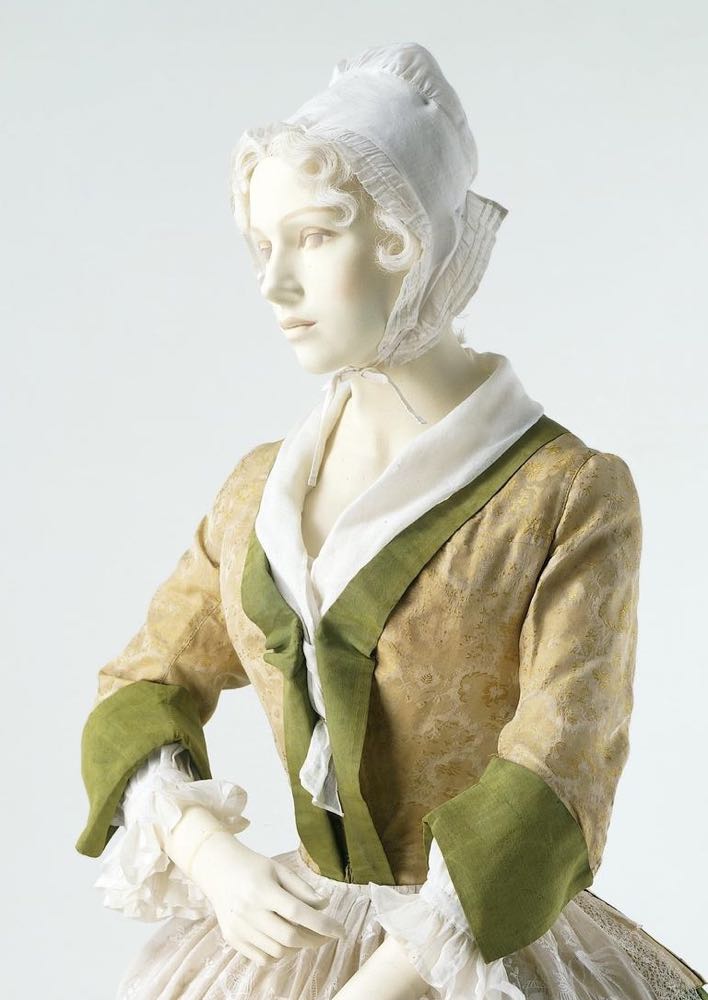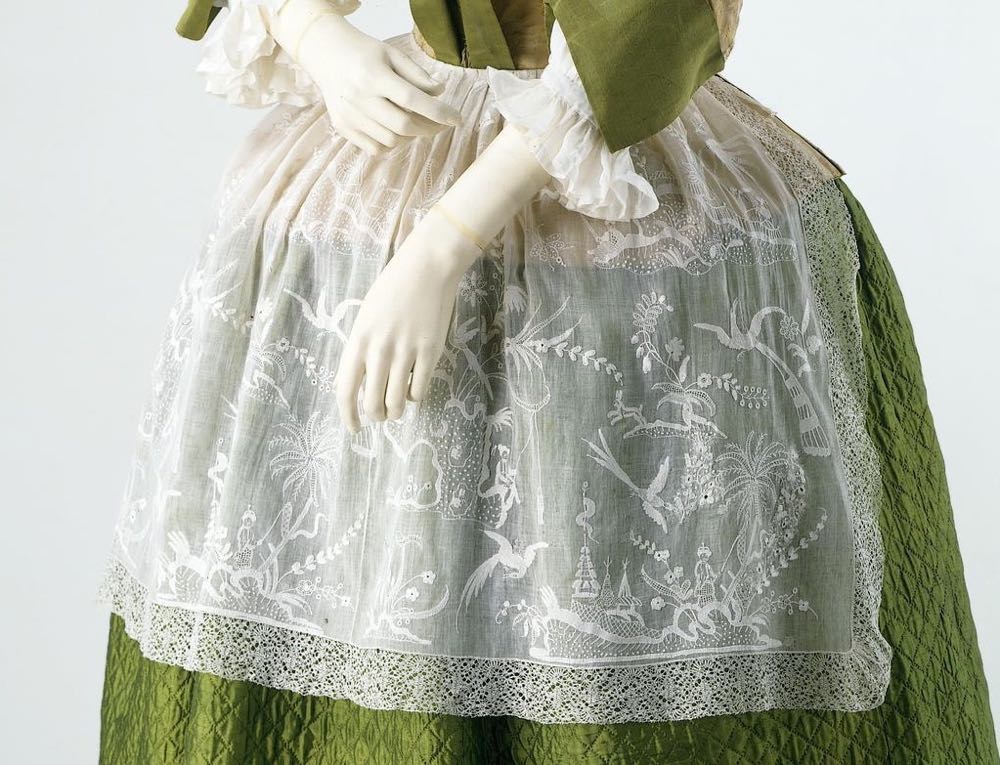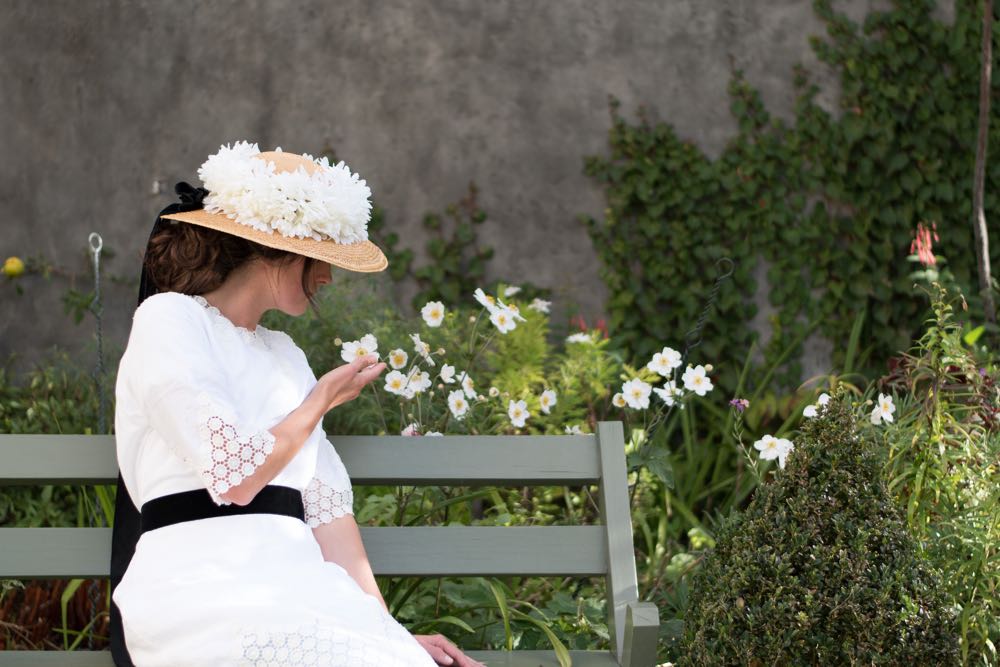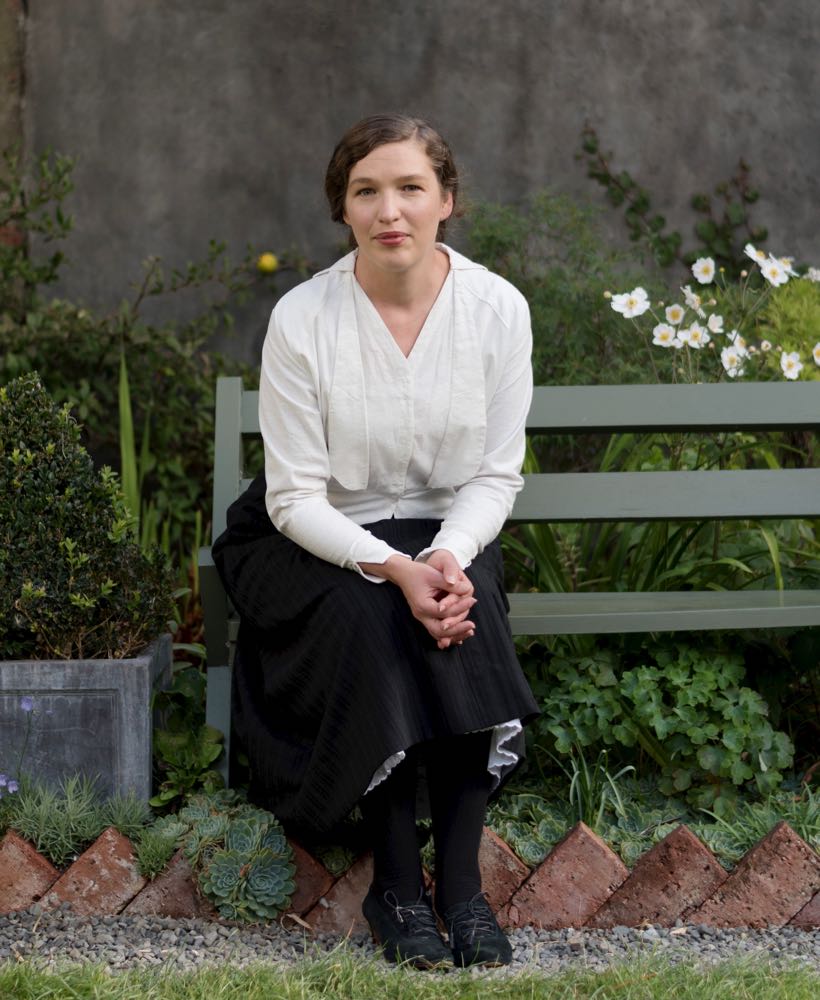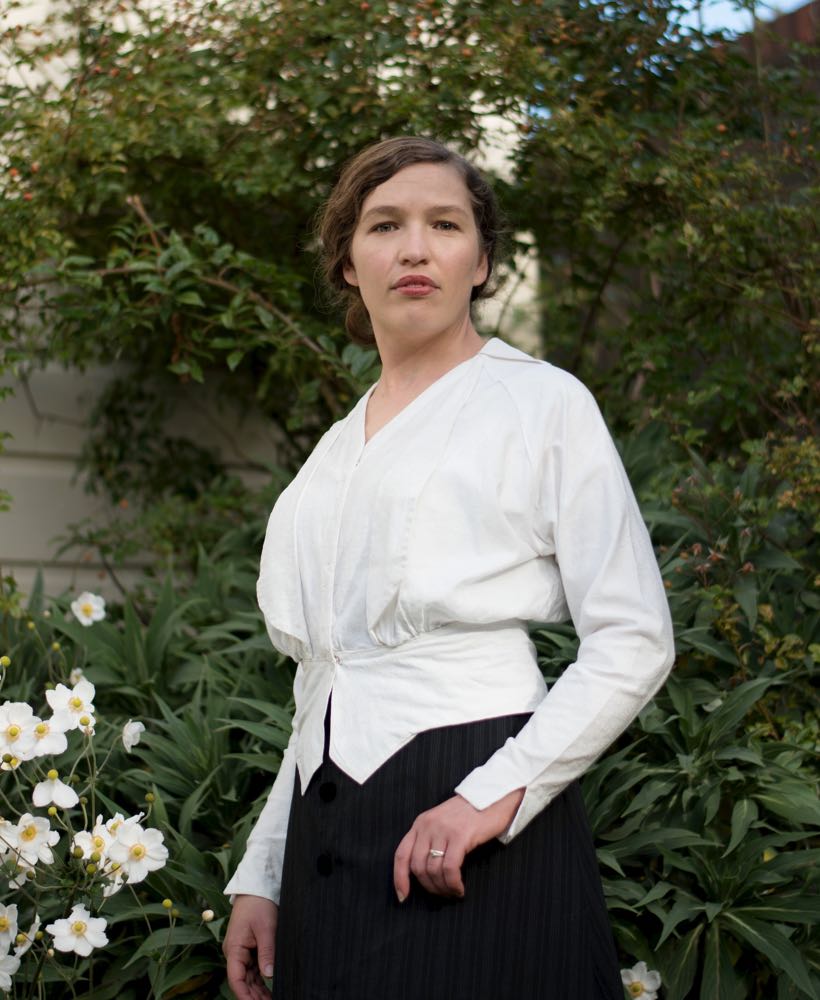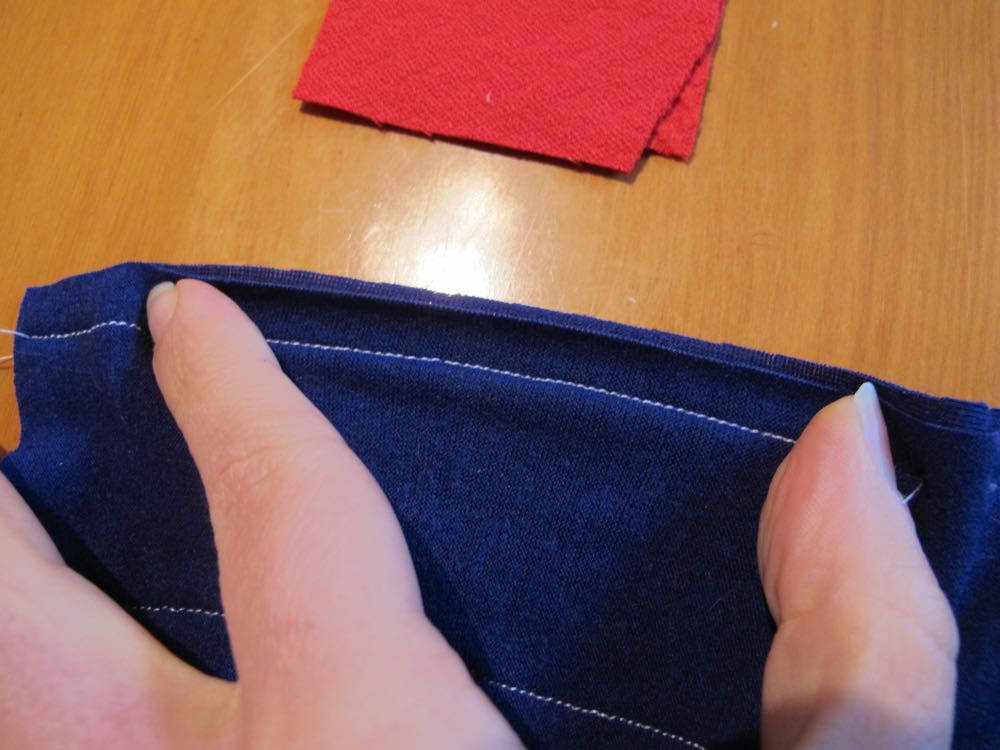Last week I showed a Finnish evening dress from 1912, which appeared sage green in the photos available. I was pleasantly surprised by how much you liked the dress – I thought it was nice, with some fabulous trim work, but not exceptional for its era, but absolutely everyone rated it higher than I would have. Hurrah! So the dress achieved an impressive 9.2 out of 10.
In contrast to last week’s gala dress, this week’s ensemble is an informal indoors affair, consisting of a jacket, quilted petticoat, and embroidered apron, all from the first half of the 18th century.

Quilted petticoat, silk and wool, England, 1740-50, T.306-1982, Jacket, silk and linen, unknown, 1720-30 of 17th century silk, T.264-1958, Apron, cotton with whitework embroidery, England (embroidery), Flanders (lace), 1720-40, T.9-1952, ©Victoria and Albert Museum, London
Intriguingly, the jacket is made from 17th century silk, and may possibly be a re-make of an earlier garment.
Whilst this style of outfit was intended for informal indoors wear amongst the upper classes, the apron, elaborately embroidered with Chinoiserie motifs, was clearly intended to impress, both for the skill of the embroidery, and for the knowledge and worldliness the pattern implied.
The quilted petticoat was a very popular garment throughout the 18th century, providing warmth and ease of movement. The simple lattice-work pattern of this example isn’t as elaborate as some, but provides a suitable backdrop for the apron, and the sheen of the green silk would have reflected candlelight beautifully.
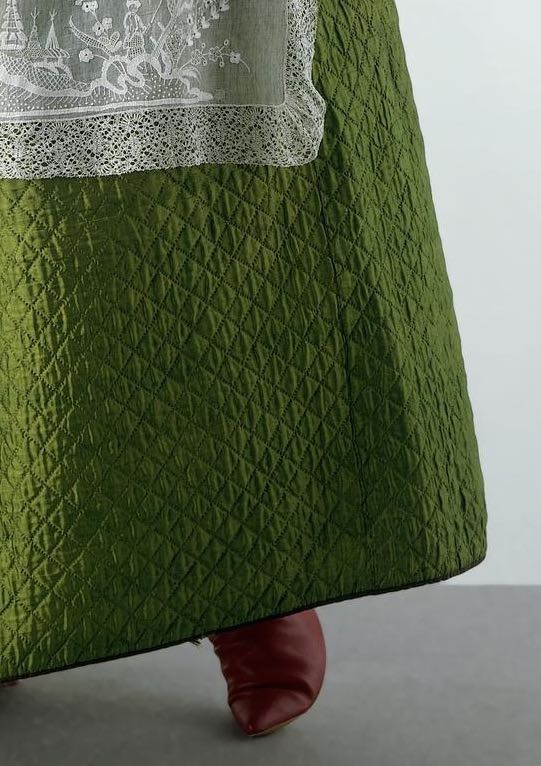
Quilted petticoat, silk and wool, England, 1740-50, T.306-1982, ©Victoria and Albert Museum, London.
What do you think? It’s an outfit that was intended to be attractive, and enviable, while still giving an overall air of simplicity. Has it worked?
Rate the Dress on a Scale of 1 to 10

